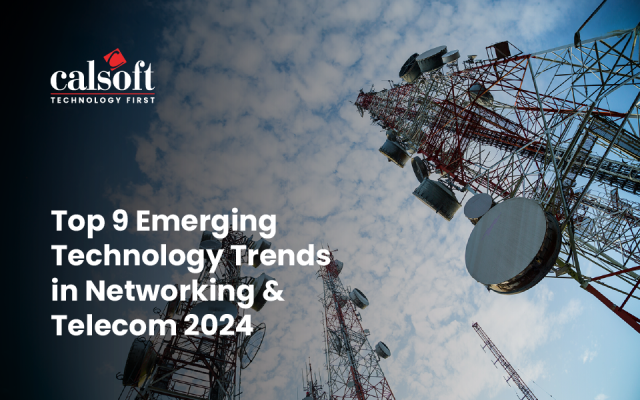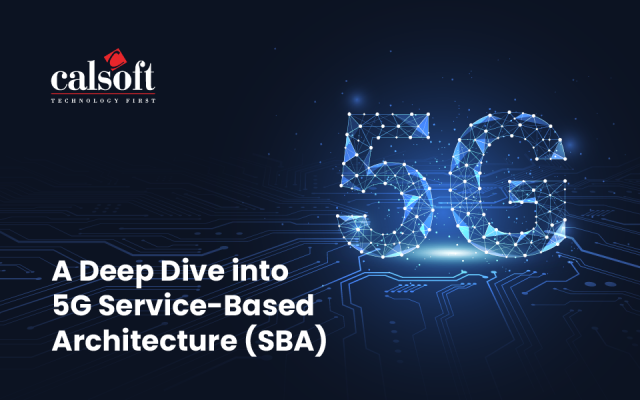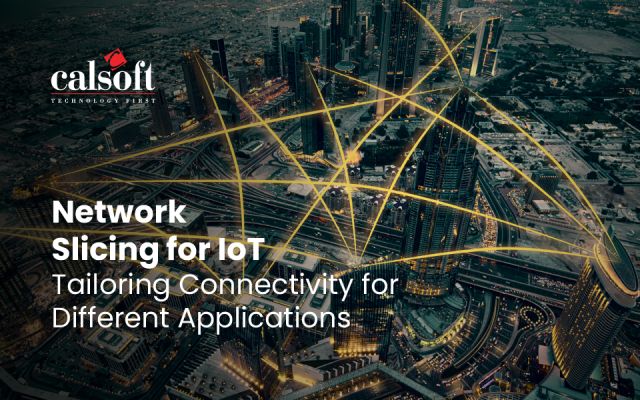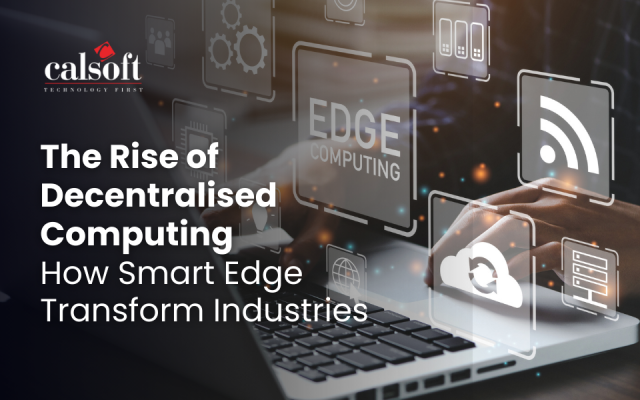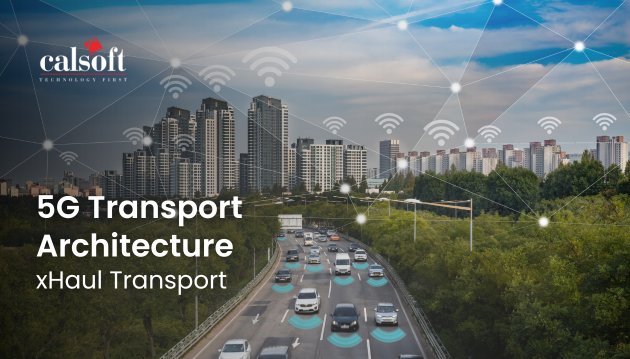The world is witnessing rapid technological evolution, transforming the IT industry and its operations. One of the significant trends in the market reshaping the industrial operations is the emergence of edge computing. The journey of digital transformation in enterprises are fuelled by the edge computing which modernise the data analysis and processing.
The rise of Internet of Things (IoT) has led to the generation of massive amounts of data than ever before, demanding highly reliable processing and analysis to generate informed decisions. Conventional cloud computing technologies becomes inefficient and insufficient to meet the demand of quicker insights. This is where the Edge Computing pitch in!
Imagine a scenario where the data processing happens close to or right at the source or at the network edge instead depending totally on distant cloud servers or remote Data Centers (DCs). The data processing at the edge or nearer to the source of data origin, edge computing is revolutionising various industrial operations, facilitating real-time and data-driven decision making, lowering the end-to-end latency, and unveiling innovative opportunities in the market.
According to Gartner reports, by the year 2025, more than 75% of enterprise-generated data will be generated and processed outside the traditional data center or cloud. Edge Computing acts as a catalyst for enterprises to embrace digital transformation and to reshape the business landscape. Multi-access Edge Computing (MEC) is one of the edge computing technologies, which is a standard architecture for telecom networks to enhance their operations. Explore the blog to learn about edge computing, MEC and how it plays a significant role in revolutionising businesses.
What is Edge Computing and Multi-access Edge Computing (MEC)?
Edge computing is a transformative technology that brings compute capacity closer to where data is created. This proximity reduces response time and the load on back-end servers. By processing data near its source, edge computing enhances performance and efficiency. It is particularly beneficial in scenarios requiring real-time data processing and low-latency responses. Edge computing is a distributed computing where computing takes place at multiple edges.
MEC is the next practical evolution of edge computing, specifically tailored for the telco cloud and is European Telecommunications Standards Institute (ETSI) defined framework. MEC is used to embrace and exploit the potential of mobile communication networks or cellular networks. The cellular networks consist of 3 parts: User, Radio Access Network (RAN), and Core Network (CN). The access networks are 4G LTE, 5G, Private 5G and possibly others. MEC realizes the computing capabilities, storage, and network services at the edge of the Mobile Network Operators (MNOs) network, nearer to the user layer and data sources. The objective of MEC is to lower latency, guarantee highly efficient and reliable network operation and service delivery, and enhance the customer experience. MEC integrates compute capacity directly at the network’s edge, utilizing the same infrastructure as the network itself. This integration allows for a seamless and efficient processing experience, crucial for modern applications that demand high-speed, ultralow-latency responses.
Why the need and adoption of MEC is Significant?
The advent of next-generation cellular network 5G as well as IoT comes with lot of network transformation to realize seamless experience to end-users with futuristic services. 5G and beyond networks are expected to deliver enhanced Mobile Broadband (eMBB), ultra-Reliable and ultra-Low Latency (uRLLC), and massive Machine Type Communications (mMTC) use cases. These use cases have different and specific technical requirements to be met in terms of security, connectivity, mobility, bandwidth, latency, and reliability.
Is MEC a key enabler to 5G to achieve the use cases requirements or futuristic services? Which are the vertical market openings MEC can deliver to telecom operators? Let’s us explore the answers to these questions.
The key factor driving the growth and significance of MEC is the deployment of 5G, with the two technologies closely linked.
The 5G deployment utilises technologies such as Network Function Virtualisation (NFV), Software Defined Networking (SDN), Edge Intelligence to simplify and enhance network operations, flexibility, and availability of innovative services. MEC is one of the key enablers for 5G to meet the ultra-low latency and high reliability requirements. Together these two technologies can realise novel applications and value-added services to unlock new revenue streams. MEC platform is capable of hosting smart and intelligent applications which are delivered over 5G networks.
Gartner predicts that the market for MEC data centers is expected to grow to $13.5 billion by 2024, driven by the inception of 5G.
The following table shows the key capabilities realised by MNOs or Service Providers (SPs) with MEC in 5G networks
| Capabilities | Description |
| Intelligent Positioning | Based on the requirements to be met the applications can be placed at edge locations or at specific 5G tracking locations. |
| Traffic Optimisation | To meet the low latency and high Quality of Service (QoS) requirements, the traffic can be prioritised through the network. |
| Enhanced Customer Experience | Seamless experience is realised by effective utilisation of bandwidth, capacity, and speed. |
| Cost-Effective Content Delivery | Caching video content at the edge enhances content delivery, lowering transmission cost. |
| Understanding Network Context | To enable service continuity, provide can inform the network and user context to applications. |
| Network Capability Exposure | Helps to explore innovative business models. Third party application can utilise the edge network capabilities. |
To realize the above capabilities can be realised by integrating 5G networks based on the 3rd Generation Partnership Project (3GPP) specifications or 5G Service Based Architecture (SBA) with MEC framework. The following section illustrates the integrated MEC deployment in 5G networks.
Integrated MEC deployment in 5G Network
The 5G system implements Control Plane User Plane (CUPS) architecture according to the 3GPP which decouples Control Plane (CP) and User Plane (UP) or Data Plane (DP). The network tries to understand the transactions between multiple users accessing the network through the CP and UP. The CP transactions consist of call/session setup, maintenance, and call termination supporting required quality, while UP transactions cover the transfer of actual data/exchange of packets between users.
5G network architecture lets MEC providers to integrate the MEC architecture in the 5G CN. MEC capabilities are enabled by migrating the User Plane Functions (UPF) to the edge. The UPF plays a vital role in an integrated MEC deployment in a 5G network. In the MEC system prospect, The UPFs are a distributed and configurable data plane. The below figure shows the integrated deployment of the MEC framework in 5G Network.
The MEC framework is composed of three key parts: System Level, Host Level, and Network Level.
The system-level constitute a MEC orchestrator, acting as an Application Function (AF) to interact with Network Exposure Function (NEF) or with other 5G Network Functions (NFs). It indirectly connects to the User Equipment (UE) via the CN and RAN. MEC orchestrator is responsible for resource allocation in MEC environment based on the details received related to UE requirements and capabilities.
The host-level part constitutes MEC platform, Platform Manager, MEC applications, and microservices. At the host level, MEC platform interacts with the 5G NFs. The MEC platform delivers the infrastructure and resources needed to facilitate and run edge applications. MEC platform is managed and operated by MEC Platform Manager. The network level manages and controls connectivity to 3GPP networks and local area networks and equips the communication interface between UE and MEC environment.
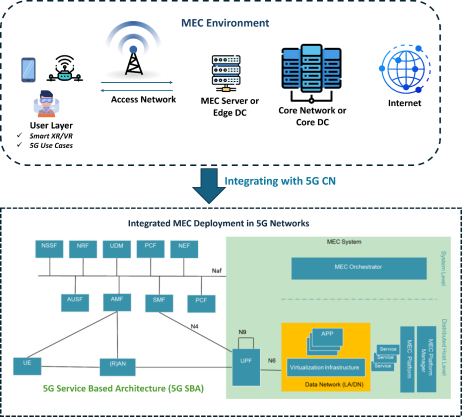
Vertical industries such as smart cities, automotive, healthcare, and more will also benefit from 5G MEC. With this integrated framework, enterprises can leverage compelling telecom network capabilities such as reliability, high-speed mobility, Service Level Agreement (SLA) assurance, and positioning services.
Benefits of MEC and Practical Applications
Together 5G and MEC can tap innovative and stimulating business opportunities across various industrial verticals, ranging from retail to manufacturing to IoT domains such as smart factories, smart hospitals and more.
Let us now delve into the benefits of MEC as well as look into some practical application scenarios where MEC can play a key role in realising the specific demands such as low latency, reliability, flexibility, and higher speed.
Benefits of Multi-Access Edge Computing
- Reduced Latency and Continuous Operations: By running on the network’s infrastructure, MEC ensures minimal latency and continuous operations even during temporary outages between the back-end server and the edge service.
- Efficient Resource Utilization: Enterprises can repurpose back-end servers for other tasks, such as machine learning training, which can then enhance the edge services’ performance.
- Proactive Resource Allocation: MEC can leverage radio access network data to predict where additional compute capacity will be needed, allowing for proactive and responsive network management.
MEC can have multiple deployment options based on the type of applications to be served. The following image depicts the different deployment options for MEC. MEC can be deployed on edge devices such as IoT devices, gateways. MEC servers are placed at RAN sites, at different aggregation points as micro DCs, or at regional data centers. MEC can realise better benefits when deployed closer to the network edge.
Practical Applications of MEC
Image/Video Analysis Application
Consider an image analysis application that communicates with the core network, which in turn interacts with a back-end server hosting an “image analysis service.” In a classical application design pattern, the user makes a request, which is processed by the back-end server before a response is formulated and sent back to the user. The entire round trip, including latency, might take around 100 milliseconds. While this is adequate for many applications, it falls short for more demanding use cases.
Now, imagine an application that handles video analysis for security or threat detection, capturing data from a crowd rather than a single user. This scenario demands real-time processing and deals with a substantial volume of data. For instance, an HD video camera can stream up to six megabits per second. Sending all this data to a distant back-end server for processing would be impractical due to the high latency and data volume.
Understanding the scenarios, let us explore how edge computing can meet the requirements of such high-demand applications.
Solving Latency and Data Volume Issues with Edge Servers
To address these challenges, edge servers are installed closer to the data source. These servers host the “video analysis service,” significantly reducing latency and data transmission requirements. In this case, the data not required to travel throughout the network to a distant server, guaranteeing faster and more efficient processing.
The Role of Mobility in Multi-Access Edge Computing
MEC introduces a crucial third element: mobility. Unlike fixed-location edge computers, MEC places compute capacity on the network itself. This flexibility allows for edge computing capabilities to be available wherever needed. For instance, edge servers can be installed at RAN base stations or network data centers, driving latency to as little as 10 milliseconds and reducing the load on enterprise back-end servers.
Conclusion
Multi-access edge computing allows communication service providers to bring compute capacity directly to users, regardless of their connection method or location. This capability is essential for modern applications that require real-time processing and low latency responses. By integrating compute capacity with the network’s infrastructure, MEC ensures enhanced performance, continuous operations, and efficient resource utilization. Enterprises which embrace MEC in their business models can underpin efficient operations, decreased costs, and heightened customer experience.
Being a technology-first partner and over 25 years of experience, Calsoft specializes in high-performing networking and telecom product engineering services. Partnering with industry leaders, we ensure our services are at the forefront of network transformation. Calsoft helps customers by delivering on-premises services to process and analyse their data at the edge.


